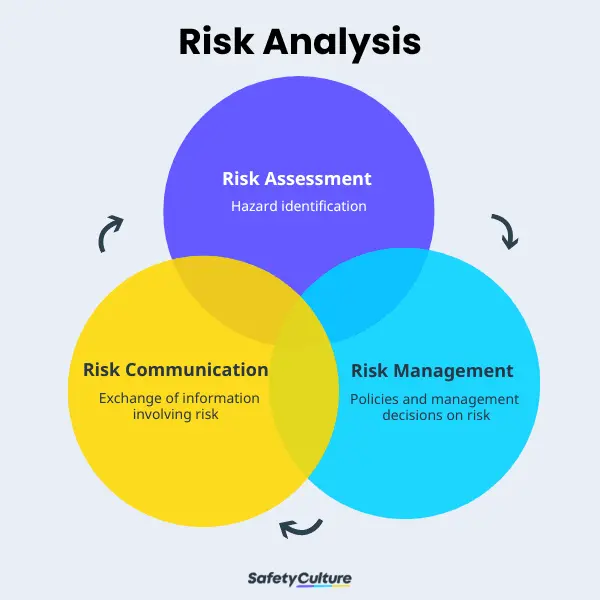Exploring the Long-Term Benefits and Importance of Risk Management for Startups
Exploring the Long-Term Benefits and Importance of Risk Management for Startups
Blog Article
Discovering the Importance of Risk Management for Effective Decision-Making Approaches
In the elaborate world of business, Risk Management arises as an important element in the decision-making procedure. The capability to determine potential threats and opportunities, and strategize accordingly, can mean the distinction in between success and failure.
Comprehending the Principle of Risk Management
Risk Management, a critical part in decision-making, is frequently misinterpreted or oversimplified. Typically, it describes the identification, evaluation, and prioritization of risks to lessen, keep track of, and regulate the chance or influence of unfortunate occasions. However, it's not simply regarding avoiding adverse results, yet also about identifying potential opportunities. Risk Management includes disciplined and organized approaches, using data and insightful assessments. It needs a comprehensive understanding of the company's context, purposes, and the possible threats that could prevent them. From economic uncertainties, lawful liabilities, calculated Management errors, to accidents and all-natural calamities, it attends to numerous risks. Importantly, reliable Risk Management is not stagnant; it's a continuous, forward-looking process that evolves with altering situations.
The Role of Risk Management in Decision-Making Processes
In the realm of strategic planning and business procedures, Risk Management plays an indispensable function in decision-making processes. It aids in identifying possible hazards and uncertainties that could affect the accomplishment of organization purposes. By tracing these risks, companies can create approaches to mitigate their influence, making certain service connection and stability. Risk Management therefore becomes a vital tool in decision-making, helping leaders to make informed selections based upon an extensive understanding of the risks entailed. It encourages a positive method, allowing companies to prepare for and prepare for possible future situations. This considerably decreases the probability of unfavorable consequences, promoting a lot more efficient and efficient decision-making approaches. For that reason, Risk Management works as a vital part in the decision-making processes of any company.

How Risk Management Enhances Strategic Preparation
In the context of tactical preparation, Risk Management plays a crucial function. Starting with the identification of possible risks, it further reaches the implementation of Risk mitigation procedures. The role of Risk Management is not fixed however vibrant, as it requires consistent surveillance and adjusting of techniques.
Identifying Possible Risks

Executing Risk Reduction
Risk mitigation methods can vary from Risk evasion, Risk transfer, to take the chance of reduction. Each approach needs to be customized to the particular Risk, considering its potential impact and the company's Risk resistance. Reliable Risk reduction calls for a deep understanding of the Risk landscape and the possible effect of each Risk.
Surveillance and Readjusting Methods
Though Risk mitigation is an essential step in critical preparation, continuous monitoring and modification of these techniques is similarly vital. It also supplies a site possibility to evaluate the success of the Risk Management procedures, allowing adjustments to be made where needed, more enhancing calculated preparation. Tracking and readjusting Risk Management methods is an important component for enhancing a company's strength and tactical preparation.
Situation Studies: Effective Risk Management and Decision-Making
In the globe of organization and finance, successful Risk Management and decision-making typically work as the pillars of prosperous enterprises. One such entity is an international oil company that mitigated financial loss by hedging versus fluctuating oil rates. In one more instance, a tech start-up prospered by determining and approving risky, high-reward strategies in a volatile market. An international financial institution, encountered with regulatory unpredictabilities, successfully browsed the scenario with aggressive Risk evaluation and dynamic decision-making. These cases highlight the worth of sharp Risk Management in decision-making processes. It is not the lack of Risk, but the Management of it, that typically separates effective firms from unsuccessful ones. These situations highlight the vital function of Risk Management in strategic decision-making. importance of risk management.
Tools and Strategies for Effective Risk Management
These tools, such as Risk registers and warmth maps, help in identifying and evaluating potential dangers. Risk action methods, a crucial part of Risk Management, include accepting, preventing, moving, or mitigating threats. With these devices and strategies, decision-makers can browse the facility landscape of Risk Management, our website consequently helping with notified and effective decision-making.
Future Trends in Risk Management and Decision-Making Techniques
As we discover the large landscape of Risk Management, it comes to be noticeable that the tools and techniques used today will proceed to advance. The idea of Risk culture, where every participant of a company is conscious and included in Risk Management, will certainly get a lot more prominence. These trends declare a more proactive and inclusive technique towards Risk Management and decision-making.
Verdict

Risk Management hence view website ends up being a vital tool in decision-making, assisting leaders to make enlightened selections based on a thorough understanding of the threats involved. Risk reduction methods can range from Risk avoidance, Risk transfer, to risk decrease (importance of risk management). Effective Risk mitigation calls for a deep understanding of the Risk landscape and the potential impact of each Risk. Risk feedback approaches, a vital element of Risk Management, entail approving, staying clear of, moving, or mitigating dangers. The principle of Risk culture, where every member of a company is conscious and included in Risk Management, will certainly get extra prestige
Report this page